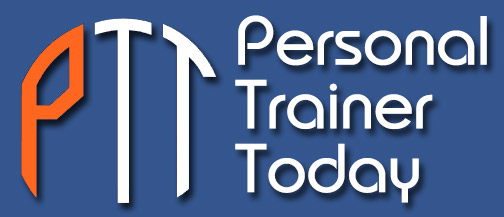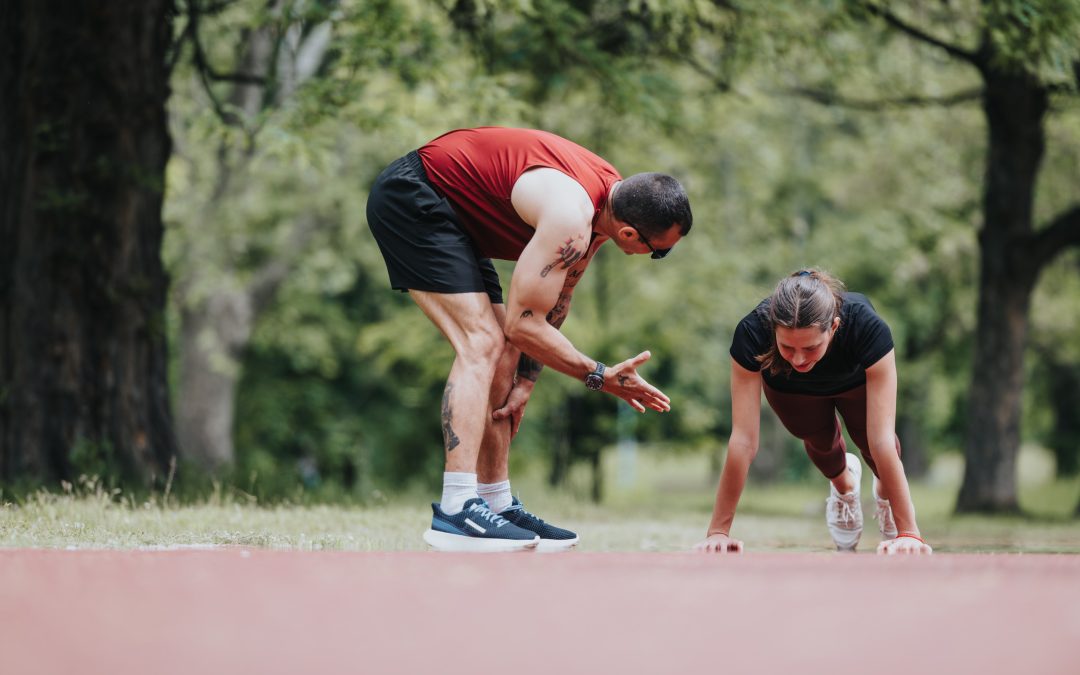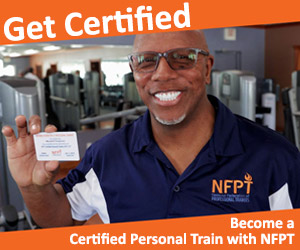When we speak of designing safe and effective workouts for a client who has never set foot in a fitness center, we face many more challenges than simply the choice of exercises. Embarking on a fitness journey can, for those new to a gym, represent an empowering decision that sets the stage for a healthier life. The key to a successful workout plan lies not just in getting the client started, but also in sustaining a plan that aligns with his lifestyle. That means tailoring a workout to match a client’s goals as well as his fitness level, preferences and schedule so that he remains motivated, consistent, and always progressing. Here we discuss both the physical and the psychological processes involved in those very important first 3 months of training.
Moving Past the “Contemplation Phase”
When a trainer meets with a new gym member/client for the initial assessment, the potential exists to set the stage for a lifelong habit. Therefore, it behooves any fitness professional to remember that in our industry we train the whole person. Think of the body as an integrated entity, not merely body parts. By addressing the psychosocial aspect of what makes someone tick, right along with the muscles and tendons, trainers can forge a much stronger connection. This goes a long way toward developing a mutual trust.
The client’s journey begins with some key questions from the trainer. The answers help the trainer understand what the gym experience represents to the client, and therefore how best to guide him on his path to wellness. Consider asking clients the following questions:
- What are your goals? Learn whether a client seeks weight loss, toning, flexibility, stress release, strength or a combination of any of these. His goals will dictate your personal training roadmap.
- What activities do you enjoy? If cardio/endurance figures into a client’s overall goals, remind him that he can accomplish this goal in other ways than spending hours on a treadmill or elliptical machine. Trainers can take a client’s activity preferences and build them into his workout program. This will increase his likelihood of committing to and staying with the plan.
- Are your goals realistic? While trainers will always jump at the chance to train a highly motivated and eager newcomer, we also have an obligation to set him up with the best chance of success. Help the client set achievable, manageable and reasonable goals rather than leaping into giant milestones.
- Can you commit to a schedule? The key to a client’s success lies in his ability to remain consistent with his time and workouts. Encourage the client to think of his gym time as a priority, a non-negotiable appointment. Positive self-care works wonders toward establishing a good habit.
Assessing a Client’s Level of Fitness
Prior to designing any beginner workout protocol, a trainer can spend some time during the initial assessment learning about a client’s fitness level. To accurately measure a client’s aerobic and muscular fitness, flexibility, and body composition, consider addressing the following parameters:
- pulse rate before and immediately after a 1-mile walk
- How long it takes to walk 1 mile, or how long it takes to run 1.5 miles
- How many standard or modified pushups he can do at a time
- How well he moves through the full range of motion in hips, knees, ankles, shoulders and elbow
- body mass index (BMI)
Armed with this knowledge, a personal trainer can begin to compile a safe and effective workout, while keeping the following points in mind:
- Make a balanced routine ~ Include at least 150 minutes of moderate aerobic activity a week, or 75 minutes of vigorous aerobic activity a week. For even more health benefits, such as weight loss, strive for 300 minutes a week of moderate aerobic activity. Engage in strength training exercises for all major muscle groups at least two times a week. One set of each exercise may suffice for true beginners. Start with a weight or resistance level heavy enough to tire muscles after about 12 to 15 repetitions.
- Start slow and go forward slowly ~ Slowly build up to a moderate or vigorous intensity level. Aim to increase activity level by no more than 10% a week. If client mentions an injury or a medical condition, get clearance from his health care professional or physical therapist.
- Plan to include different activities ~ Cross training, or engaging in a variety of different activities, can help alleviate boredom with an exercise routine. Cross-training using low-impact forms of activity also lowers the chances of injuring or overusing one specific muscle or joint.
- Allow time for recovery ~ Many people try to jump-start their fitness programs with amped-up energy. However, if clients work out too long or too hard, they may tend to give up when muscles and joints aches appear. Plan time between sessions for the body to rest and recover.
Getting Started
As the trainer readies the new client to begin his fitness program, he may wish to periodically remind the client of the importance of the following basic tenets of exercise:
- Start slowly and build up gradually ~Warm up with a combination of easy walking or gentle stretching.
- Break things up ~ Discuss ways to integrate activity into an average day. Shorter bouts of exercise throughout one’s day may fit better into an already packed schedule than a single 1-hour session. The client can still derive aerobic benefits from 3 or 4 brief bursts of energy expenditure.
- Listen to body cues ~In the presence of pain, shortness of breath, dizziness or nausea, take a break. If a client truly does not feel well, the flexibility of the workout should allow for a day or two off from the gym.
Putting It Together
For the remaining bulk of this article, we will highlight several different beginner workouts, each one cultivated for a client’s specific goals and abilities. Choose a carefully structured program designed to ease the client into fitness. Gradually increasing the intensity/complexity of exercises can help the body adapt to new movement patterns. A well-rounded beginner workout plan should include a variety of exercises that target all the major muscle groups. This protocol allows the new athlete to build strength, endurance, and flexibility.
Tips for each workout
- Go slow – focus on technique
- Rest for 60-90 seconds between each set
- Keep moving while actively resting – a gentle walk around the gym floor will keep muscles warm and heart rate elevated appropriately
- Ideally perform the workout in the order listed, but if another athlete occupies the equipment, simply switch the order for convenience.
In this first workout, circuit training offers a perfect opportunity for new clients who may not have a huge block of time to dedicate to exercise.
Beginner circuit workout
Following a short dynamic warm-up, the client can complete three mini circuits, each with three exercises. Complete each circuit three times before moving on to the next one. (Three circuits, three moves, three sets = 3-3-3.)
Circuit 1 — repeat 3 times
- Squats — 20 reps
- Reverse lunge with knee drives — 8 reps on each side
- Jump twist and squats — 8 reps
Circuit 2 — repeat 3 times
- Push-ups — 12 reps
- Three-legged dog twists — 8 reps on each side
- Single-leg crunches — 8 reps on each side
Circuit 3 — repeat 3 times
- Side lunges with hands raised — 8 reps on each side
- Butterfly dips — 8 reps
- Reverse crunch rolls — 8 reps
Beginner gym workout for females
This workout aims to tone the entire body, placing a slight emphasis on the legs and glutes
- Seated leg press (10 reps x 3 sets)
- Seated shoulder press (10 reps x 3 sets)
- Close grip lat pulldown (10 reps x 3 sets)
- Bodyweight lunges (10 reps x 3 sets)
- Plank (30 secs x 3)
- Leg raises (10 reps x 3 sets)
Beginner gym workout for males
This workout helps men gain strength and lean mass. While still serving as a full body beginner workout, it adds an extra focus on the arms and core.
- Seated chest press (10 reps x 4 sets)
- Seated rows (10 reps x 4 sets)
- Wide grip lat pulldown (10 reps x 4 sets)
- Seated leg press (10 reps x 4 sets)
- Dumbbell seated shoulder press (10 reps x 4 sets)
- Dumbbell bicep curls (10 reps x 4 sets)
- Close grip tricep press (10 reps x 4 sets)
- Cable rotations/twists (10 reps x 4 sets)
- Reverse crunches (10 reps x 4 sets)
Beginner gym workout for strength
The desired repetition range for strength training lies somewhere between 4–6 reps; using this protocol requires the client to exert more energy for less reps (which will mean lifting heavier). For novice strength-training clients, use a manageable weight for the first few weeks and gradually increase the load 1 week at a time. Upon lifting comfortably for 8–10 reps using the same weight, consider increasing the weigh
- Barbell push press (6 reps x 4 sets)
- Goblet squat (6 reps x 4 sets)
- Dumbbell single arm row (6 reps x 4 sets)
- Shoulder lateral raise (6 reps x 4 sets)
- Bench press (6 reps x 4 sets)
- Pull ups/assisted pull ups (6 reps x 4 sets)
- Barbell bicep curls (8 reps x 4 sets)
- Cable overhead tricep extensions (8 reps x 4 sets)
- Rotating plank (30 secs x 4)
Beginner gym workout for fat loss
Any fat loss program strives to elevate heart rate. By pushing cardiovascular fitness, the higher heart rate leads to a greater caloric burn; in fact, upon completion of the exercises, excess calories continue to burn as the body tries to recover and ultimately return to homeostasis.
- Mountain climbers (20 reps x 3 sets)
- Box jumps (10 reps x 3 sets)
- Walk outs (10 reps x 3 sets)
- Renegade rows (full plank/kneeling) (10 each side x 3 sets)
- Press ups (full plank/kneeling) (15 reps x 3 sets)
- Treadmill 10 min run/steep incline brisk walk (no hands)
- Supermans (full plank/kneeling) (10 reps x 3 sets)
- Crunches (10 reps x 3 sets)
Beginner Strategy Beyond Weights
If a client wishes to embark on his new fitness journey without serious strength-training, introduce him to cardio, flexibility, stretching and mobility moves. Once he gains confidence in these areas, he may choose to begin incorporating resistance training. Offer the new client some of these techniques:
Cardio: improves cardiovascular health. Some good cardio exercises for beginners include:
- Walking
- Jogging
- Running
- Biking
- Swimming
- Jumping rope
- Hiking
Stretching & Mobility: these exercises help to improve flexibility and range of motion, while also mitigating the risk of serious injury. Some good stretching and mobility exercises for beginners include:
- Dynamic stretches
- Static stretches
- Foam rolling
Progress Updates
Assess a client’s fitness abilities approximately six weeks after beginning the program. Repeat this process every few months. If the client’s motivation falls off, together you can come up with new goals. Celebrate the small victories along the way. Whether it’s an increase in stamina, weight loss, or improved flexibility, acknowledging and honoring a client’s progress helps both of you stay positive and confident in achieving goals.
With careful planning and pacing, trainers can help clients begin a healthy habit that will ideally last a lifetime. If during an initial assessment, a client still seems hesitant to begin, trainers can point out the following benefits to a well-rounded activity plan:
- Solid Core Foundation ~a well-structured plan strengthens core muscles, setting the stage for overall strength and stability.
- Elevated Energy Levels ~ regular physical activity infuses each day with renewed vitality and vigor, transforming daily life into a dynamic adventure.
- Enhanced Flexibility and Mobility ~ helps ease the challenge of navigating daily tasks while minimizing the risk of injuries.
- Better Posture ~ By targeting core and back muscles, a beginner workout plan promotes improved posture – a significant asset for both the gym and everyday life.
References:
https://www.planetfitness.com/community/articles/beginner-workout-plan-your-first-week-gym
https://www.wilmamag.com/how-to-make-and-stick-to-a-workout-plan-in-7-steps/
https://www.nuffieldhealth.com/article/gym-workouts-for-beginners
https://www.onlymyhealth.com/golden-rules-of-strength-training-for-beginners-1679051241
https://www.mayoclinic.org/healthy-lifestyle/fitness/in-depth/fitness/art-20048269
Cathleen Kronemer is an NFPT CEC writer and a member of the NFPT Certification Council Board. Cathleen is an AFAA-Certified Group Exercise Instructor, NSCA-Certified Personal Trainer, ACE-Certified Health Coach, former competitive bodybuilder and freelance writer. She is employed at the Jewish Community Center in St. Louis, MO. Cathleen has been involved in the fitness industry for over three decades. Feel free to contact her at trainhard@kronemer.com. She welcomes your feedback and your comments!


